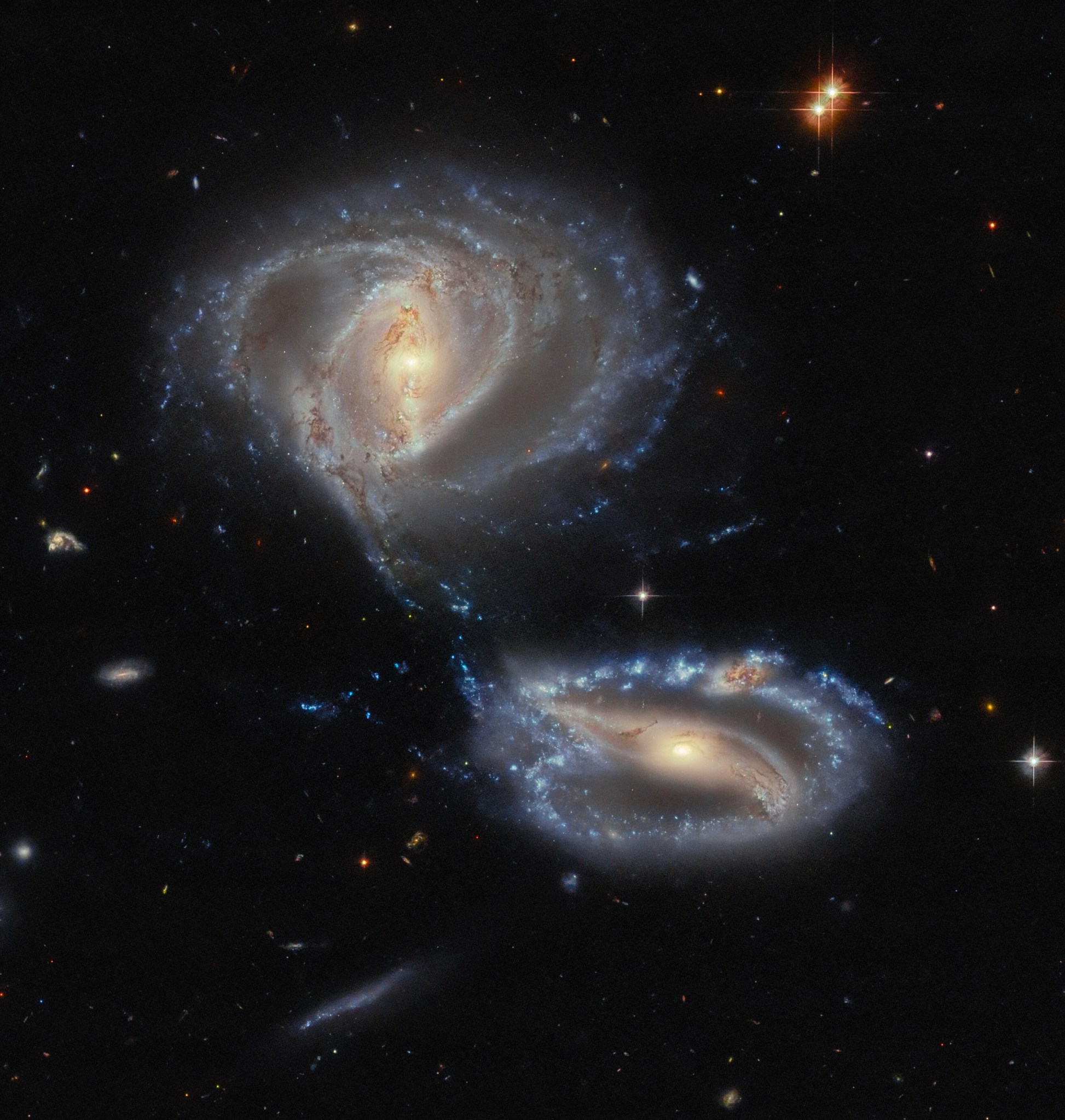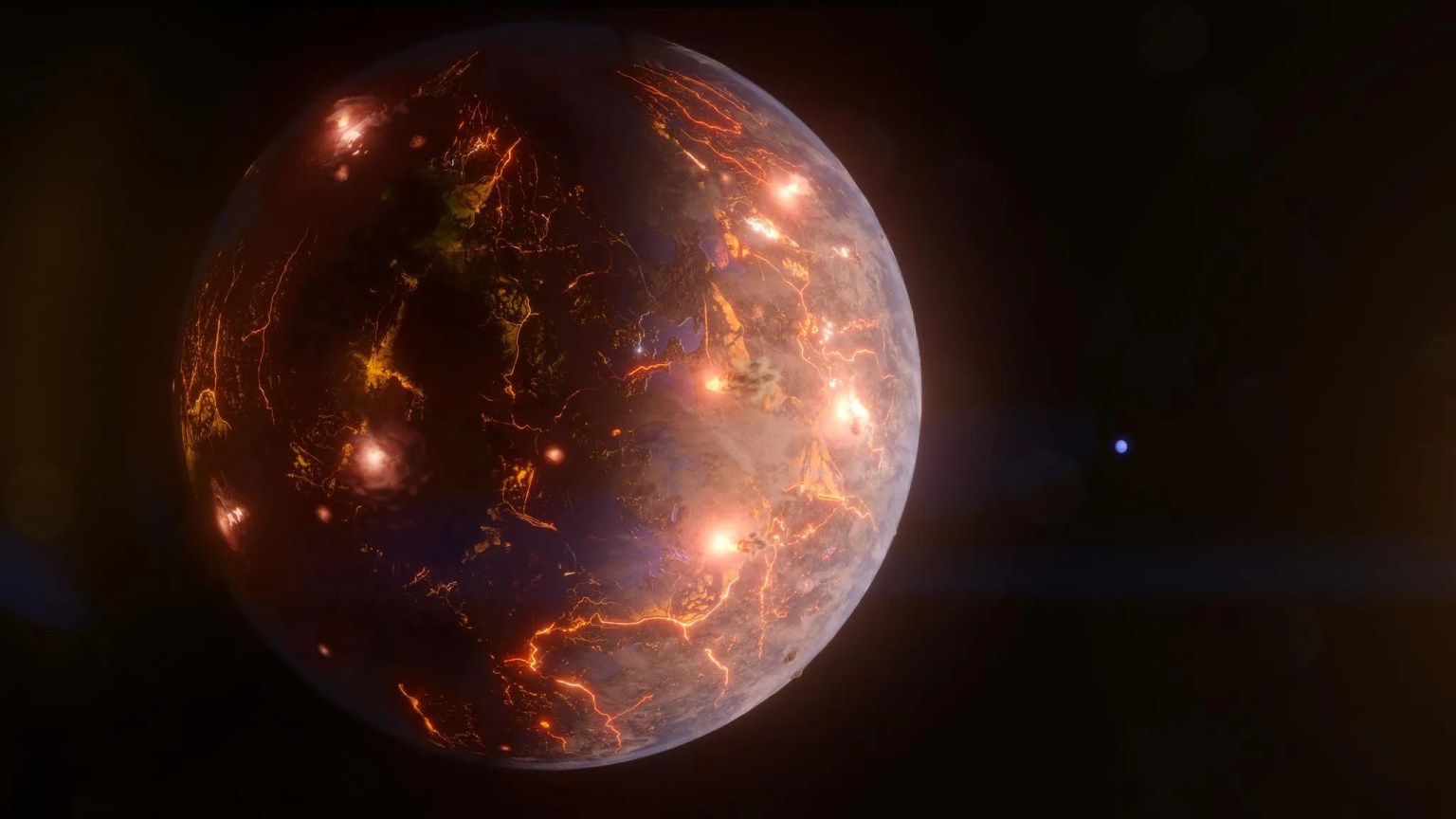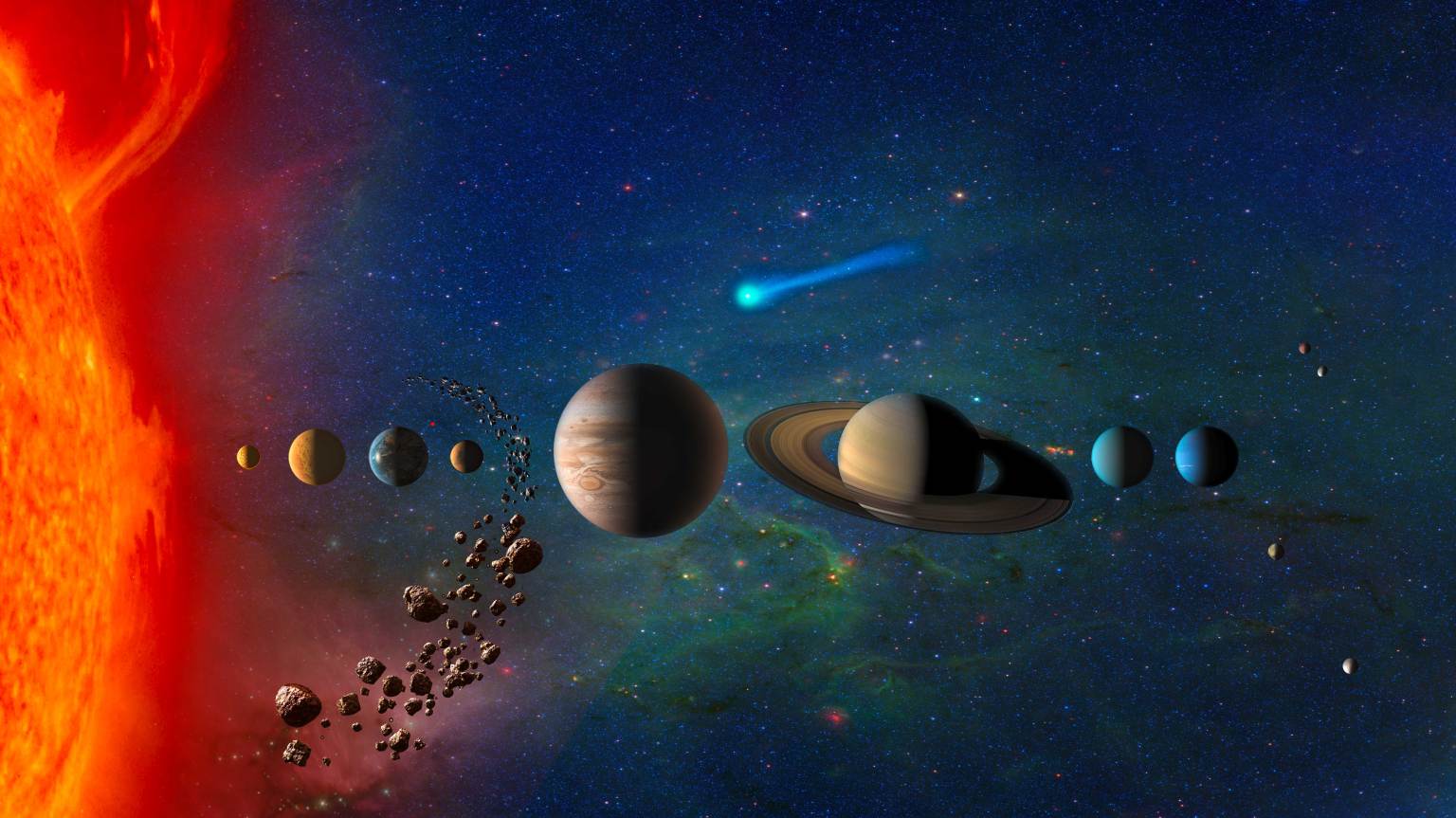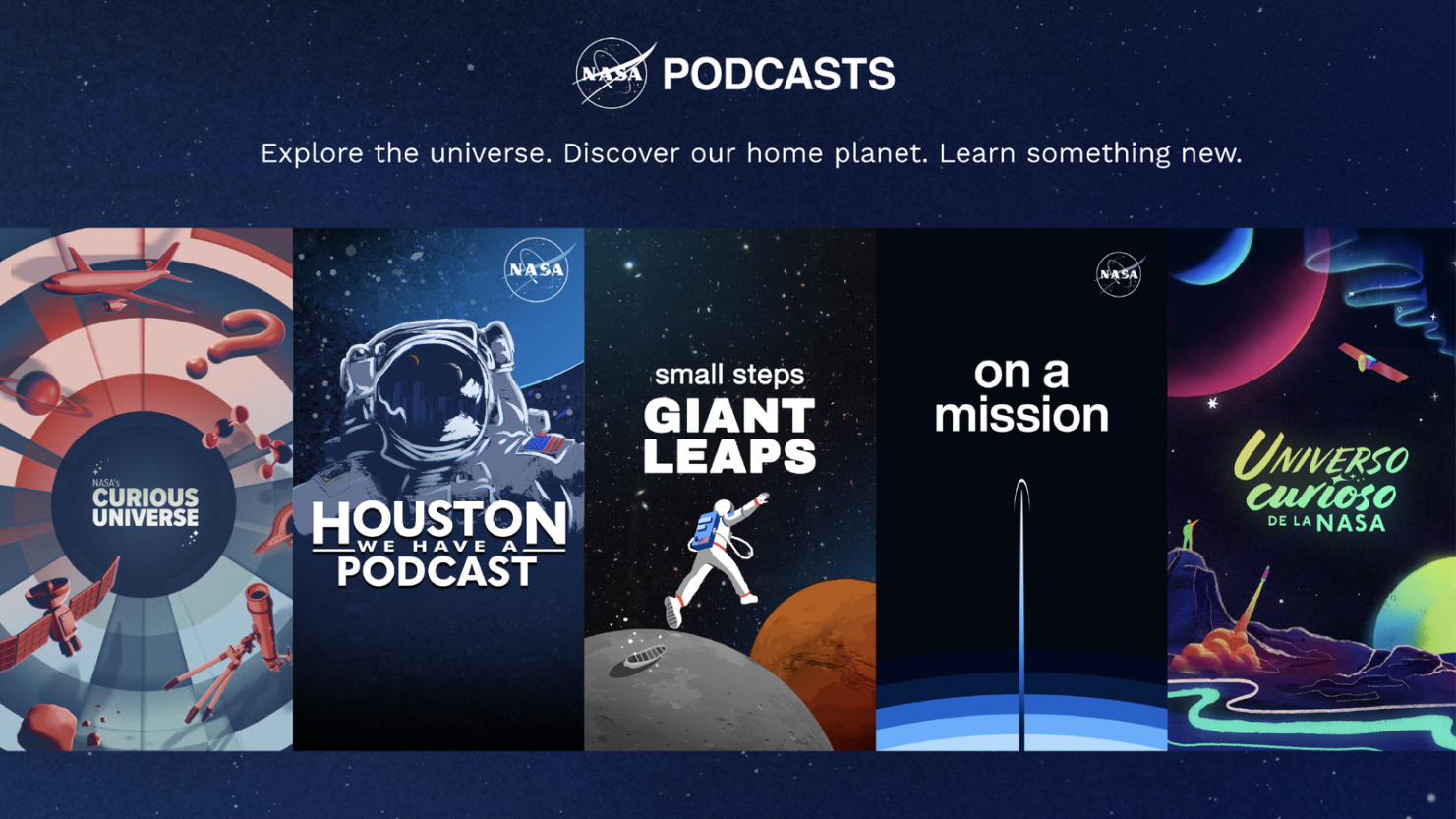Hubble Captures a Galactic Dance
This striking image from the NASA/ESA Hubble Space Telescope captures the interacting galaxy pair known as Arp-Madore 2339-661. The Arp-Madore catalog is a collection of peculiar galaxies, and this group’s particular peculiarity might be odder than first meets the eye, as there are three galaxies interacting here, not just two. The two clearly defined galaxies […]

2 min read
Hubble Captures a Galactic Dance

This striking image from the NASA/ESA Hubble Space Telescope captures the interacting galaxy pair known as Arp-Madore 2339-661. The Arp-Madore catalog is a collection of peculiar galaxies, and this group’s particular peculiarity might be odder than first meets the eye, as there are three galaxies interacting here, not just two.
The two clearly defined galaxies are NGC 7733 (smaller, lower right) and NGC 7734 (larger, upper left). The third galaxy is currently referred to as NGC 7733N and is visible if you look carefully at the upper arm of NGC 7733. There you can spot knot-like structure, glowing with a different color than the arm and obscured by dark dust. This could easily pass as part of NGC 7733, but analysis of the velocities (speed and direction) involved reveals that this knot has a considerable additional redshift. This means it is very likely its own entity and not part of NGC 7733. This galaxy group presents one of the many challenges that observational astronomers face: working out whether an astronomical object really is just one, or multiple objects, one lying in front of another as seen from Earth’s perspective!
All three galaxies lie quite close to each other, roughly 500 million light-years from Earth in the constellation Tucana, and, as this image shows, they are interacting gravitationally with one another. In fact, some science literature refers to them as a ‘merging group,’ which means they will ultimately become a single entity.
Text credit: European Space Agency
Media Contact:
Claire Andreoli
NASA’s Goddard Space Flight Center, Greenbelt, MD
claire.andreoli@nasa.gov
Share
Details
Related Terms
What's Your Reaction?













































